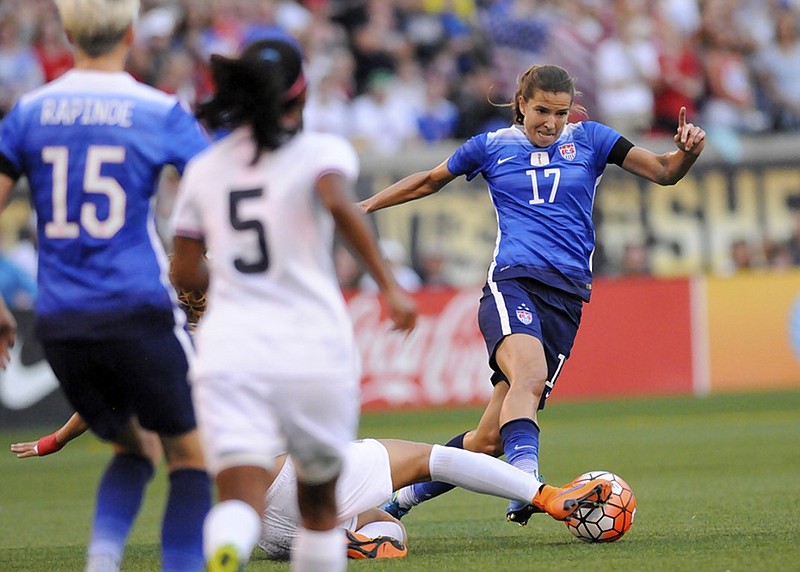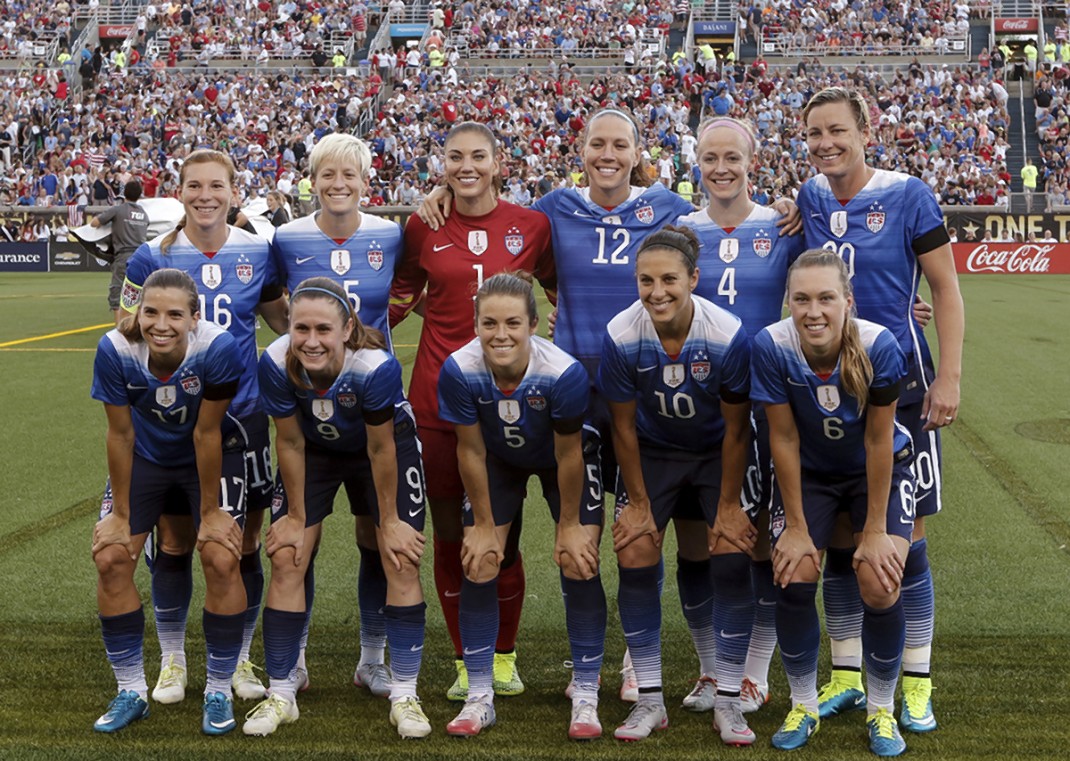You know your team has arrived in these dynasty debates when you no longer get choked up over a world championship. You're extremely happy, quite possibly smiling from ear to ear. You still cheer your team and jeer the opponent and the referees during the game. You may even bite your fingernails at the first hint of trouble.
But when it's over, you just kind of soak it all in, having pretty much assumed from the start this outcome was destined to be.
And to some extent, that's what it felt like when the United States beat the Netherlands 2-0 in the Women's World Cup final on Sunday in Lyon, France. It felt expected. It felt almost pre-ordained, even if only one other country - Germany - had ever previously repeated as champ in the history of the tournament, which started in 1991 and is held every four years.
So even though a good portion, if not the majority, of the crowd chanted "U-S-A! U-S-A! U-S-A!" as the final seconds ticked off, it felt different than in 2015, or 1999, or 1991, when we didn't seem assured of anything.
And that's OK, because when it comes to sports the whole world takes seriously, the United States is not exactly the colossus it once was, or at least the one Americans perceived it to be.
Yes, we still mostly dominate basketball, and we'll probably always own our version of football, that vicious sport played with helmets and shoulder pads and such, because we're pretty much the only country rich enough to field teams on a massive scale at the youth level.
But check out the latest pro tennis rankings for both men and women and you won't see a U.S. woman until Sloane Stephens at No. 9, followed by Serena Williams at No. 10. It's even worse for U.S. men, given that John Isner is the highest-ranked American at No. 12 and Taylor Fritz the second-best at No. 31.
Want to peruse the world rankings for golf? We may be better than we've ever been on the men's side, with seven of the top 10, including No. 1 Brooks Koepka. But eight of the top nine women - thank goodness for Lexi Thompson at No. 3 - are from somewhere other than the United States.
Need we even discuss men's soccer after the United States failed to qualify for the 2018 World Cup? The main draw includes 32 teams, and we couldn't even make it that far.
The Women's World Cup is clearly another matter. We've won four of them now, and it's theoretically a more difficult tournament to qualify for because only 24 countries make the main draw.
As Fox analyst Kelly Smith said Sunday, "Everyone is playing catch-up to this U.S. team."
And pardon me if all this hits a little closer to home than just it being the good ol' U.S. of A. Because for the 20,535 of us who stood inside a rain-hammered Finley Stadium on the night of August 19, 2015, these ladies of supreme distinction will also always be the Scenic City's team.
Carli Lloyd, who was playing in her 281st and supposedly final game for the Red, White and Blue on Sunday, was there that night, scoring twice in that 7-2 "friendly" win over Costa Rica. So were 2019 team members Alex Morgan, Megan Rapinoe, Kelly O'Hara, Tobin Heath, Christen Press, Becky Sauerbrunn, Ali Krieger and Alyssa Naeher, to name more than a few. The legendary Abby Wambach was taking her victory lap before retiring.
Charming and articulate throughout their stay in Chattanooga - which included an open practice at Finley the day before, with a lengthy autograph session after the workout - they clearly represented the country the way a national team should.
Which is also why their lobbying for equal pay in World Cup play - personally, I'd pay them more because they're more popular, have better television ratings and are far more successful than their U.S. male counterparts - has such merit.
Understand that this is a FIFA financial blueprint, not an American one. And while we may not appreciate it here, men's soccer worldwide is a more popular, prosperous endeavor than its female counterpart. Kind of like WNBA ratings versus NBA in this country.
And perhaps because of that, there is some understandable reason why FIFA allocated $30 million in prize money for this Women's World Cup ($4 million for the winner) while dispersing $400 million ($38 million to 2018 winner France) for the men's event last summer in Russia.
But when you see a packed stadium in France, this disparity would seem anything but fair. Twice as much? Maybe. But more than 10 times more?
Where's the ghost of Susan B. Anthony when you need her?
Actually, the U.S. women already have such an activist in the outspoken Rapinoe, the pink-haired MVP of the tournament.
After hearing that FIFA planned to double the women's prize money to $60 million in 2023 while raising the men's purse to $440 million, Rapinoe said: "It certainly is not fair. We should double it now and use that number to double it or quadruple it for the next time. That's what I mean when we talk about, 'Do we feel respected?'"
The whole issue caused such a stir for Sunday's final that after the "U-S-A!" chants began to subside, chants of "Equal pay!" filled the air during the awards presentation.
This also led to a statement by the U.S. women's players association that read, in part: "These athletes generate more revenue and garner higher TV ratings, but get paid less simply because they are women. It is time for the federation to correct this disparity once and for all."
Actually, where the U.S. women are concerned, it's way past time.
Contact Mark Wiedmer at mwiedmer@timesfreepress.com.


